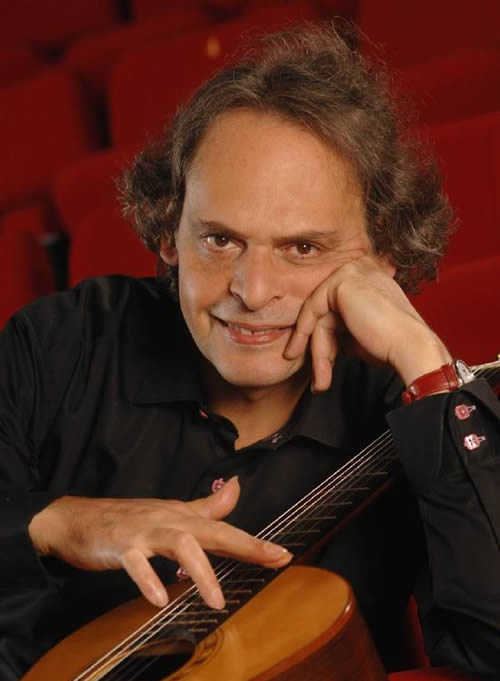电吉他音箱专业英语的非专业解析(一)
本文借用Axe Fx II说明书中音箱的部分,来讲一讲其中很多专业名词的中文含义,希望大家学到英语的同时,又能增长不少关于吉他音箱的专业知识。
首先,作为吉他设备的说明书,除小部分知识属于专家级别外,作者预计大部分用户应该都能看懂的,但我们国内的乐手或者爱好者却大部分都看不懂,一是因为基础知识不足,二是很多专业词汇没有统一的中文翻译。这几年大家的演奏的技巧可以说是突飞猛进了,但对于乐器的了解还是稍有点滞后。因此我以自己的经验来讲讲如何读懂这些英语资料。
以下并不是原文翻译,只是选取了一些关键的词作解析,一是因为我不擅长翻译,二是这样更能调动大家的能动性,更容易记住。
5.1.1 Basic Amp Parameters (TYPE, PRE, PWR, EQ Pages)
Amp Type
Amp types are presented in an alphabetical list. A complete table appears on p. 154. It is possible to adjust DRIVE, MASTER, and LEVEL parameters directly from the TYPE page by using the A, B, and C knobs.
A note on DRIVE controls: there are three possible drive configurations which vary based on the selected amp TYPE. Some amps have only an INPUT DRIVE control (i.e. BRIT 800, DELUXE VERB.) Other types have both INPUT DRIVE and OVERDRIVE (e.g. USA LEAD, ODS-100 LEAD.) Finally, those models that simulate “jumpering” the inputs of a 4-hole amplifier (e.g. PLEXI 50W JUMP, HIPOWER JUMPED) have separate individual TREBLE DRIVE and NORMAL DRIVE controls, which behave like Input Drive Controls for their respective channels.
Amp——amplifier的缩写,意思是放大器。一般我们只会叫箱头或音箱等,很少直接叫放大器,但实际上英文里面很常用,就是音箱的功放部分,有时也会只音箱的整体。
Parameters——参数。通常是模拟器的说明书用的比较多。
Drive——驱动,也是控制增益的,有时候也被理解为gain,一般会有过载出现。
Master——一般理解为总音量,大部分情况是前级输入后级信号的量,也可以理解为后级是否过载,与过载度的控制。
Level——水平、电平,一般没有特指某一件事,而会与其他词语搭配,如send level,output level等等。
INPUT DRIVE – (aka “Drive”) sets the amount of preamp gain/distortion. Used in conjunction with the MASTER (see below), INPUT DRIVE determines whether the sound will be clean, slightly broken up, moderately overdriven, or completely distorted.
The Axe-Fx II faithfully reproduces the sound of the treble peaker circuit on the INPUT DRIVE control found on many amps. This can be heard as the low frequencies are attenuated more than the highs when the INPUT DRIVE is turned down (and vice versa).
For amps which have no MASTER VOLUME, the INPUT DRIVE functions as the amp’s VOLUME control.
Preamp—前级。Preamp gain/distortion就是前级增益/失真。
Clean—清音,未过载时的音色。
Broken up—刚刚过载。
Moderately overdriven—轻度过载。
Completely distorted—完全失真。
OVERDRIVE – The OVERDRIVE control appears only for certain amp types. Note that DRIVE and OVERDRIVE are applied to the appropriate points in the circuit for the amp being modeled, i.e. prior to the last triode stage or prior to the third triode.
INPUT TRIM – Amps without OVERDRIVE will display the INPUT TRIM instead. This allows you to adjust for more or less preamp gain than the actual circuit being modeled. This is different than theInput DRIVE control because DRIVE interacts with the surrounding circuitry, changing frequency response as it is varied.
Triode—三极管。通常吉他放大器的前级都是由三级管负责放大,通过几只三极管对信号连续几级放大,就很容易产生过载甚至失真,这个Overdrive和Drive的控制,设计在几级放大的不同位置,两个组合出来不同的设置,会产生不同的失真效果和音色。
Trim—在不同的领域有不同的用法,这个词多数出现在录音行业,吉他音箱里很少见,大意也增益的意思,可放大也可以缩小,但不改变频响。
BOOST – Toggles an additional 12 dB of gain at the input of the amp sim. (For amp types that have an OVERDRIVE control (see above,) BOOST appears only on the ADVANCED page.)
Boost—提高增益。电吉他吉他系统里面,增益是个最基础的概念,但用的词可真够丰富的,诸如gain、drive,甚至volume、master都是控制增益。这个boost最常见在前级之前或者前级过载之前加大增益,让前级更易过载,另外还有一些boost专门提升中高频和高频,这样更容易在乐队中突显出来。
BASS, MID, TREBLE – While other modelers use simple filters to approximate amp tone controls, the Axe- Fx II replicates exactly the frequency and phase response of a classic passive tonestack. In most instances, matching knob settings between the Axe-Fx and the original amp will recreate the same tones.
Some of the original amps simulated on the Axe-Fx II do not have all of the tone controls offered on our models. Some, for example, have no mid control. To faithfully simulate the configuration of the original, set any superfluous controls to noon (or “0.00” if you are using the “ACTIVE” tonestack type; see below). Of course, you may still adjust to achieve tones the original amp does not have.
Extreme tone and high gain settings can cause pickup squealing or excessive noise. This is especially true with the TONESTACK TYPE (p. 54) set to “ACTIVE.”
Passive tonestack—被动式音调电路。Tonestack在字典里是查不到的,它指的就是高中低频控制的一整块电路。在吉他放大器里面,绝大多数音调电路都是被动式的,也就是衰减不同频段的信号以达到改变音色的目的。
BRIGHT – This is a high treble filter between the preamp and power amp, useful to darken or brighten the tone in a unique way. This control accurately replicates the “Presence” control on the original version of the “USA Pre” type amps. (Not to be confused with the “BRIGHT SWITCH” (see below) which engages/disengages a capacitor across the drive pot.
BRIGHT SWITCH – Many amplifiers contain a “treble peaker,” included as a pull or toggle switch, or even hard-wired. Every amp TYPE on the Axe-Fx II includes this control (even if the original mode does not). The effect may be subtle or quite pronounced depending on the amp TYPE. This is also affected by the BRIGHT CAP setting (p.54). If the original amp had no bright circuit, BRIGHT is OFF by default but can still be turned on to apply circuit values suited to an amp of that general type. If the amp has a hard-wired treble peaker, the default BRIGHT state is ON. To turn the bright switch ON or OFF, use the keys to select the TREBLE knob and press ENTER. The “BRT” switch beneath the knob will fill to indicate that the circuit is engaged.
Power amp—后级放大器。
Presence—大多数人理解为临场度,也有人说是超高频,是高频段增减的控制。最早的设计通过调节后级的负反馈来实现,不但是提升高频,频率响应也不一样了,但后来也有一些设计在前级电路,就是一个有别与treble的高频控制。
Bright switch—提升高频的控制开关,打开后高频会更明显,更闪亮。它原来其实很简单,通过一个小电容,把高频信号绕过volume、gain、drive或者master等等这些增益的控制器,直接输出到下一级,所以在这些旋钮拧得特别小的时候,bright效果特别明显。这个电容有时通过提拉旋钮或者是拨档开关接通,有时也会直接焊接在电位器上,一直处于打开的状态,但说明书是不会写出来的,只能看具体电路。
CUT SWITCH – (engaged by a switch beneath BASS) reduces the amount of low frequencies into the amp simulation. This can be used to achieve a “tighter” tone or to reduce low-end “flub”.
Cut—这个在吉他放大器上面通常作衰减高频用的,但在此是衰减低频。
Tighter—更结实。tight多指低频的感觉。
Low-end “flub”—low-end一般就是我们说的最低的频段,有些人也理解是低频的下潜,flub就是“糊了”。低频太多导致过载容易糊,缺乏力度感,但有些人又喜欢这种带点发兹(fuzzy)的味道。
FAT SWITCH– In the same way the TREBLE knob (above) also controls BRIGHT, the MID operates as a “Fat” switch, emphasizing midrange “body” by shifting the tonestack center frequency down.
Fat—我们通常理解为“肥”,而这个肥来源于中频的频点变动和中高频的提升。“body”所指的大概就是这个fat的频段。但在Bogner Duende上的Master EQ,‘body’指的是低频控制。
SAT SWITCH – The Saturation Switch engages a popular mod between the preamp and the tonestack for a thicker, more aggressive distortion character. “ON” and “IDEAL” settings differ only in their effect on the output level. (“IDEAL” gives you the higher output level you wish a real amp had with saturation engaged ;-)
Sat—saturation的缩写,饱和的意思,其实源于电子管工作的一个专业词语,饱和并不是直接指音色饱满,而是电子管工作到了饱和状态,开始过载了。
Mod—modify或者modification的缩写,修改的意思,就是我们常说的“摩机”,通过对放大器做些修改让其音色更趋于自己的审美和应用需要。
Thicker—更厚。通常是调整中频和中低频的增益量来达到音色变厚的效果。
Aggressive—这是经常出现的词,中文很难描述精确,大概就是更具攻击性的意思,多数用在过载或者失真上,听觉上应该是狂野的,粗犷的,肥厚的,激昂的。
PRESENCE/HI-CUT – Boosts (or cuts) the upper frequencies from the power amp simulator by varying the negative feedback frequency response. Increased presence can help a sound cut through a heavy mix. Amps with no negative feedback circuits in their design cannot utilize a presence circuit. If NEGATIVE FDBK is set to “0.00,” PRESENCE becomes a negative high-shelf equalizer at the output of the power amp, and its label changes to “HI-CUT.” This allows you to control the high-frequency response of the power amp for models that don’t have any negative feedback. When changing to a model with no negative feedback (i.e. Class-A, Mr.Z, Recto Red), be sure to check your presence settings as settings higher than zero might darken the sound undesirably.
Negative feedback—负反馈。一种后级的电路设计,有助于加强后级工作的稳定性,会降低后级的增益以及失真,老式的presence控制就是通过调节高频段的负反馈,来达到控制高频响应和增益的效果。
Hi-cut—通常是在后级管前的信号,加一个削减高频的电路,常用于没有负反馈的后级,亦即没有presence控制的情况下就会用hi-cut。
DEPTH – Boosts low frequencies from the power amp simulation by varying the negative feedback frequency response. The DEPTH control is set by default to an appropriate value when the amp TYPE is selected, but this setting may be overridden.
Depth—低频的深度和增益。跟presence的原理一样,通过改变后级负反馈的量,来控制低频响应。也可以这样理解,presence、hi-cut和depth都是属于后级的EQ。
TUBE TYPE – The virtual power amp in the Axe-Fx includes modeling of the plate impedance of the power tubes. Plate characteristics are adjustable via DYNAMIC DAMPING, an advanced parameter. The TUBE TYPE parameter sets DYNAMIC DAMPING automatically for you, allowing you to select from common power tube types instead of selecting a number. EL34, EL84, 6L6, 6V6, KT66, KT88, 6550, 6973, 6AQ5 and 300B (triode) are offered, as well as an ideal tetrode and ideal pentode. The power tube type defaults to the appropriate type when the amp type is selected but may be changed freely.
Plate—电子管的屏极。Plate impedance就是屏极阻抗,不同的电子管都会有各自不同的屏极阻抗,这是电子管的特性之一。
Dynamic damping—动态衰减或动态阻尼,这个也是属于电子管的特性。这个一般用户不需要深入了解了。
NEG FDBK – This controls the amount of negative feedback, or damping, in the power amp simulation. Higher values give a tighter and brighter sound but can sound harsh at very high master volume levels. Lower values give a loose and gritty sound and feel. Like many other power amp parameters, NEGATIVE FEEDBACK is set to an appropriate value whenever you change the amp TYPE, but it can then be changed as desired. For example, you might dial in some negative feedback on a “Top Boost” to give the power amp a more “American” sound while still retaining the preamp voicing.
负反馈对后级的音色影响很大,包括音色上和演奏感觉上,例如高低频两端的延伸,整个后级的增益,高频是否刺耳,低频是否松散,最重要的是对手上力度的响应,是压缩的还是爆发型的。
MASTER VOLUME – The almighty Master Volume is a very important control. It determines the distortion and dynamics characteristics of the power amp simulator, and its setting is key to an amp’s sound. As the Master is turned up, the entire character of the amp will change. The tone controls will have less influence on the sound, and the sound will have more “bloom” and touch sensitivity. Settings for MASTER don’t necessarily correspond to knob positions on the amp being modeled. With a little experimentation on your favorite Axe- Fx II amps, you will learn to appreciate the qualities of different DRIVE and MASTER VOLUME settings and how to find the great tones offered by different combinations.
When you select an amp TYPE, the MASTER will change to an appropriate/typical setting for that amp. If a real amp doesn’t have a Master, the “correct” setting for MASTER VOLUME is 10.0.
At high Master settings, less drive is usually required, especially for high-gain types.
Amps designed for preamp distortion will typically sound great with the MASTER VOLUME set low to prevent the tone becoming muddy or noisy. This includes the USA Lead types, SOLO 100, and others.
Amps with negative feedback (damping greater than zero) tend to have a “crunchier” power amp distortion, which can get “raspy” if driven too hard. You can experiment with the interactivity of DAMPING (see Advanced Parameters, below) and MASTER VOLUME to achieve desired distortion timbres.
Setting SAG (see below) to zero will disable Power Amp simulation, at which point the MASTER becomes a simple level control with 40 dB of range.
If more power amp gain is desired, the MASTER VOLUME TRIM parameter (See section 5.1.4) can be used for increased range.
Master volume—总音量控制,在模拟器里面,这个旋钮是可以随意拧的,但在现实生活中却因为环境的限制,很难开到很大。它主要是控制后级信号的输入量,决定了后级是否饱满,是否过载,以至过载度,而这些又直接关系到输出的音色和演奏感觉。当master可以开大之后,它与gain或者drive的组合,就用了更多的可能性。
Bloom—旺盛的、精神的、闪亮的音色。
Touch sensitivity—这也是最常见的词语,触感敏锐的意思。Master开大之后,很多放大器都会变得触感更敏锐了。但这个词更多用于描述一台放大器具的高品质。
High gain—高增益,通常指失真度比较大的类型。
Muddy—模糊的,通常是贬义的,用来形容音色模糊不清的,很多放大器失真度大了之后都会出现这种情况,但不是发兹那种碎碎的,烂烂的感觉。
Noisy—杂音、噪音过多,显得不够干净利落,甚至影响了正常的演奏。
Crunch—或者crunchy,这个词也常用,但也很难直译成中文词语,也是指后级的一种演奏感觉,就是后级刚过载时,那种用力演奏的响应,所谓好不好发力的一种体现。有些放大器总是有点压缩,感觉使不上力,有些放大器则具有爆发力,即使过载也能体现出力度的大小,这里还可以细分出两类,一种是很有弹性的,很轻松自如的,另一种是硬硬的,脆脆的感觉。
Raspy—焦躁的,刺耳的。很多放大器都有这个毛病,电路上可以通过调整负反馈和master volume的量来改善。真实的放大器则大多是因为生产品质问题导致的。
Sag—这个词不太好简单解释。它是一种供电不足的响应,当master开到很大时,也就是后级管(class AB后级)消耗的功率很大,供电电路会跟不上,尤其是用力那一下或者是那个音头,感觉反应慢了或者压缩严重了。有点类似于电子管整流和晶体管整流的区别,但又不全是。有些fuzz或者过载类效果器,用电池和用变压器会有不同感觉,也有部分原因是因为sag。
OUTPUT LEVEL – This is a copy of the LEVEL control on the MIX page for easy volume adjustment without page turning. This only affects volume. It has no effect on tone! For many people, this is the “go to” parameter for setting the output level of a preset.







